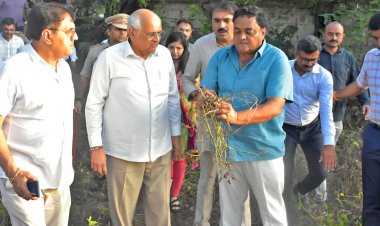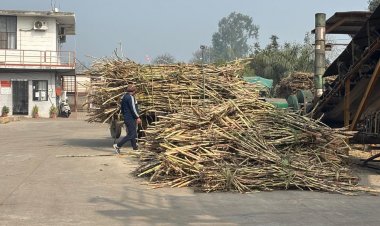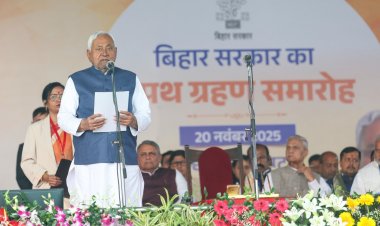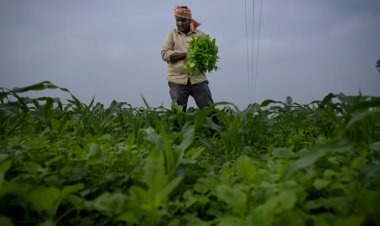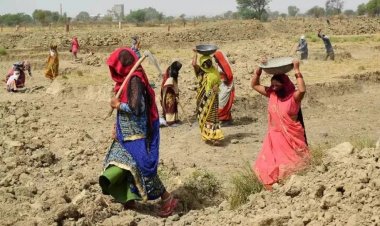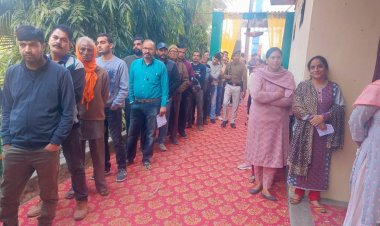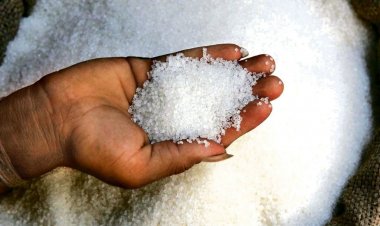Soybean farmers in Madhya Pradesh face new crisis, yellow mosaic threatens crops
In Madhya Pradesh, soybean crops are at risk from 'yellow mosaic' disease, raising alarm among farmers. The disease has caused yellowing of crops in several districts, including Neemuch, Mandsaur, Dhar, and Khargone. Agricultural experts warn that if the disease is not managed promptly, it could lead to complete crop destruction
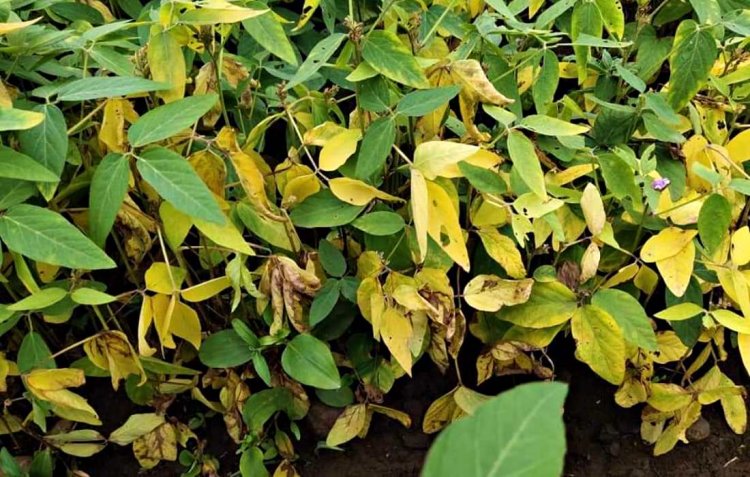
Farmers in Madhya Pradesh are grappling with a severe new issue affecting their soybean crops: 'yellow mosaic' disease. This comes as an additional challenge to already struggling farmers dealing with low soybean prices. The disease, which has been observed in districts such as Neemuch, Mandsaur, Dhar, Khargone, and Dewas, is causing the soybean plants to turn yellow and develop red and brown spots. If left unchecked, yellow mosaic can lead to the complete destruction of the crop.
Dr. G.S. Kulmi, head and senior scientist of Khargone Krishi Vigyan Kendra, told Rural Voice that 'yellow mosaic' is a disease spread by whiteflies, which causes soybean leaves to yellow and develop yellow and brown spots. This disease can stunt plant growth, reduce pod size, and shrink grains. If not addressed early, it becomes difficult to control, leading to severe crop damage and loss.
Dr. Kulmi also noted that inadequate water drainage exacerbates the problem. Recent heavy rains have caused waterlogging in fields, which contributes to the yellowing of crops. Dr. Kulmi advised farmers to improve water drainage from their fields to help protect their crops from additional harm.
Jagdish Verma, a farmer from Jhalki village in Sehore district, told Rural Voice that his timely-planted soybean crop, which was initially promising, has now been severely affected by yellow mosaic. He fears significant financial losses if the disease persists.
To prevent the disease, whenever yellowing is observed in the crop, spray a solution of 1 ml of sulfuric acid and 0.5 percent phasor sulfate in 1 liter of water. Additionally, to combat mosaic disease, uproot and destroy affected plants. Prepare a solution by mixing 500 to 600 grams of Methot and Metasystox in 500 to 600 liters of water and apply it per hectare. Also, apply neem oil on the plants and use 'yellow sticky traps' in the field to manage whiteflies.
Kedar Shankar Sirohi, President of the Farmers Cell of Madhya Pradesh Congress, told Rural Voice that while a good soybean crop was anticipated this year, the emergence of 'yellow mosaic' has heightened farmer concerns. This issue is affecting 5 to 6 districts, where farmers have reported yellowing of their soybean crops. Sirohi stressed that soybean is primarily grown in these districts, and failure to control 'yellow mosaic' promptly could significantly impact production. He urged farmers to act quickly to protect their crops.
Shivam Baghel, a member of Kisan Satyagraha Manch, also highlighted the urgent need to manage the spread of yellow mosaic. He recalled that during 2018-19, the disease caused severe losses and destroyed crops worth lakhs. The disease causes soybean leaves to yellow and can destroy entire crops within days. Baghel noted that early detection of the disease is challenging, and pesticide application after sowing is crucial to safeguard the crop.
Soybean Prices at 10-Year Low
Soybean prices in Madhya Pradesh have fallen to their lowest level in a decade, with current rates between Rs 3500 and Rs 4000 per quintal in the state's mandis. This price drop before the harvesting season has raised farmers' concerns. The price has fallen below the Minimum Support Price (MSP), which is at Rs 4892 per quintal for the upcoming Kharif marketing season (2024-25) fixed by the Central Government.
Decline in Soybean Production
Data from the Soybean Processors Association of India (SOPA) shows a continuous decline in soybean production over recent years. Madhya Pradesh produced 524.70 lakh tonnes of soybean in Kharif 2023, 541.38 lakh tonnes in 2022, 522.92 lakh tonnes in 2021, and 417.74 lakh tonnes in 2020.



 Join the RuralVoice whatsapp group
Join the RuralVoice whatsapp group

















